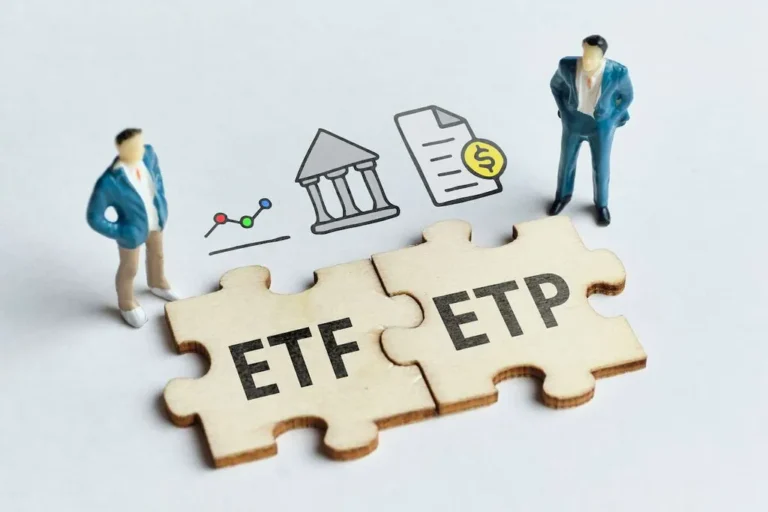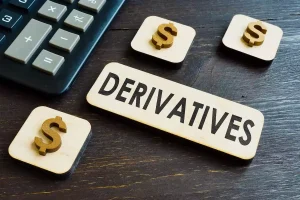To secure long-term profits, investors are looking for time-tested ways to diversify sources of income and build liquidity. However, devising and implementing a reliable strategy may be laborious without grasping the subtle distinctions between various instruments. Comparing ETP vs ETF and understanding how to use modern marketplaces is a prerequisite step toward ensuring full transparency of the process.
As a type of Exchange Traded Product (ETP), ETFs facilitate reducing expenses and allow traders to put money into potentially lucrative markets without spending money on stocks they do not need. In the article, we explore these two terms in detail to demonstrate the main use cases of such valuables.
What Is an Exchange-Traded Product (ETP)?
The term describes a situation when stockholders of various levels of experience utilize pooling to access a larger choice of stocks and get a foothold in niche sectors. Whether they are interested in regular stocks or want to leverage limited commodities, they use ETPs to conduct operations with shares.
Their importance lies in the fact that they enable shareholders to diversify portfolios and quickly react to volatile market situations. Their usage contributes to the overall stability of the financial system and enables investors to discover new opportunities to maximize gains.
Experienced stockholders use ETPs to access bundled assets traded on trusted trading sites. These resources have countless advantages, including the following:
- Transparency: The tools are monitored by the SEC;
- Low cost with high ROI: Passive index tracking means shareholders do not have to pay high fees.
- Decent liquidity: They are bought and sold on major platforms several times daily, which makes them better than mutual funds.
- Diversification opportunities: ETPs facilitate operating with assets of various types across quite a few markets, enabling shareholders to achieve impressive exposure.
- Limited tax liability: Utilizing bundled assets, traders optimize taxes.
The benefits demonstrate that investing in ETPs may be a viable strategy to profit from access to several industries and assets while saving money on fees. They share several traits:
- Availability on stock exchanges: Traders purchase and sell them on top stock platforms via intermediaries.
- Fluctuating prices: Their value matches during the day, which opens many opportunities.
- Decreased fees: ETPs have a low proportion of expenditure. Besides, some platforms offer commission-free opportunities.
- Bundled securities: An ETP is a whole portfolio of assets, including stocks and currencies.
Working with them opens a host of diversification opportunities, and allows saving money on management fees, and access to niche industries.


Turnkey Brokerage Solution For Your Business
Get the most profitable fully licensed fx/crypto brokerage software or ready-to-operate business in 48 hours. Best-in-class web & mobile trading platforms, sales-driven CRM, full integration with MT4/5, and 150+ payment providers.
What Is an Exchange-Traded Fund (ETF)?
When employing investment instruments, asset holders may decide to purchase a bundle of stocks or an ETF. They are acquired on marketplaces and traded throughout the business day. ETFs allow dividing assets within a basket by types and regions and working with equities and bonds.
Due to the arbitrage mechanism, the price remains relatively stable. The success and widespread popularity of such tools is explained by their intuitive functionality. They remain the most popular types of ETPs and allow people to diversify investment arrays without taking extra steps. Traded like equities, they allow shareholders to access markets without paying extra fees and taxes. Traders interested in working with an exchange traded fund should study the types of such assets:
- Stock index ETFs: The investment vehicles allow keeping an eye on the S&P 500 and other indexes.
- Specific ETFs: They are the perfect fit for investors focused on particular industries.
- Bond tools: They allow keeping tabs on government and other similar indexes.
- Fiat and cryptocurrencies: Such ETFs let monitor rates, hold activities directly, or invest in by-products.
- Commodity ETFs: These are utilized by those who need to track the prices of popular positions or invest in futures.
- Inverse ETFs: Experienced investors who want to short positions use them to deploy complex strategies.
- Leveraged ETFs: They are used by specialists who want to employ derivatives and debt to maximize gains.
Investors who have more experience and possess advanced technical knowledge may also experiment with similar instruments.

Other Types of ETPs
What makes ETPs suitable for many uses is that the term is used to describe all sorts of securities besides EFTs. The most widespread option is an exchange traded note (ETN). However, exchange traded commodities (ETCs) also streamline achieving exposure to commodities without developing complex strategies, requiring a laborious implementation.
The former are contracts allowing one party to provide another party with funds upon the condition they will be returned with interest. Deploying such tools ensures a lender will get a fixed amount of interest until the other side pays back the debt in full. Professionals knowledgeable about the intricacies of bond investments will easily figure out how to leverage ETNs. Even though these stocks are unsecured, they are safe if they are issued by trusted organizations.
Deliverbating whether ETNs are worthy of attention, venture capitalists typically estimate the following:
- Credit hazards: ETNs’ value depends on the authority of an issuing institution. If any issues arise, it may decline regardless of the index.
- Liquidity-related issues: When some ETNs have poor trading volumes, they become a less appealing choice than ETFs, as it might be challenging to purchase the investment options at a specific price.
- Market exposure: ETNs facilitate accessing a wider choice of valuables and implement innovative strategies. Setting a foothold in emerging sectors and dealing with private equity also becomes possible.
Utilizing ETNs, individuals monitor the value of the underlying index with high accuracy, which enables them to avoid costly mistakes. In addition, there is no need to pay taxes until ETNs’s maturity, which facilitates optimizing expenses.
ETCs are favored by those who intend to plough money into metals, the energy sector, or the agricultural industry without committing themselves to futures contracts or paying for physical goods. Access to a commodity pool lets shareholders operate at markets using securities available on stock platforms.
What to Consider When Choosing Between ETPs and ETFs
Those who are interested in high liquidity typically opt for ETFs, knowing that such tools are characterized by more impressive trading volumes, which makes them the perfect choice for companies and individual stockholders.
Their liquidity is guaranteed due to the simplicity of the creation and redemption. It ensures the price won’t stay far from the net asset value (NAV). The fact that other types usually have decreased liquidity makes them a less appealing alternative.
This ETP vs ETF comparison shows their similarities. Selecting a suitable tool, it’s pivotal to analyze the existing market demand and employ analytics tools to make an accurate prognosis regarding future trends.
Markets with low supply and demand make it challenging to match buy and sell orders, which may lead to potential losses and limit the space of a maneuver. Without a well-thought-out strategy, it is advisable to avoid a narrow spread to mitigate possible risks and preserve wealth.
Besides, paying attention to regulatory requirements is another step everyone should take to protect themselves. Even though both are under the jurisdiction of the SEC, ETF holders must comply with some specific laws.
ETNs and ETCs also have specific rules. If a person wants to short shares, the operation is easier to conduct with ETPs.
Costs and Fees Associated with ETPs and ETFs
After discovering the potential applicability of these financial instruments, learning how to deploy them with maximum efficiency is the surest way to boost profits. Nevertheless, seasoned traders also take into account the conditions offered by marketplaces that guarantee the availability of the stocks.
In estimating a potential ROI, appraise the factors that may affect earnings. All ETPs require dealing with additional expenses:
- Expense ratios: The annual payment includes administrative and other fees. Compared to MMFs, ETFs are more beneficial. For ETCs, fees differ depending on how they are managed.
- Trading expenses: When purchasing or selling stocks, holders pay commissions, such as brokerage fees. As some trusted brokers offer programs without any extra commissions, working with save enables stockholders to increase ROI.
- Discounts and premiums to NAV: The fees and bonuses depend on the current market situation. Paying attention to them facilitates selecting the most potentially profitable positions. Seasoned traders compare the fees to boost ROI and ensure stable capital growth.
In the ETP vs ETF comparison, we have examined the contrast between these tools, emphasizing that the latter is a type of the former. ETPs facilitate accessing bundled valuables and conducting operations with them on exchanges while enjoying decreased fees, high liquidity, and limited tax liability. When choosing between them, it is pivotal to consider the current ETP regulations and conduct research to devise a result-yielding strategy before adding either of these assets to a portfolio.






